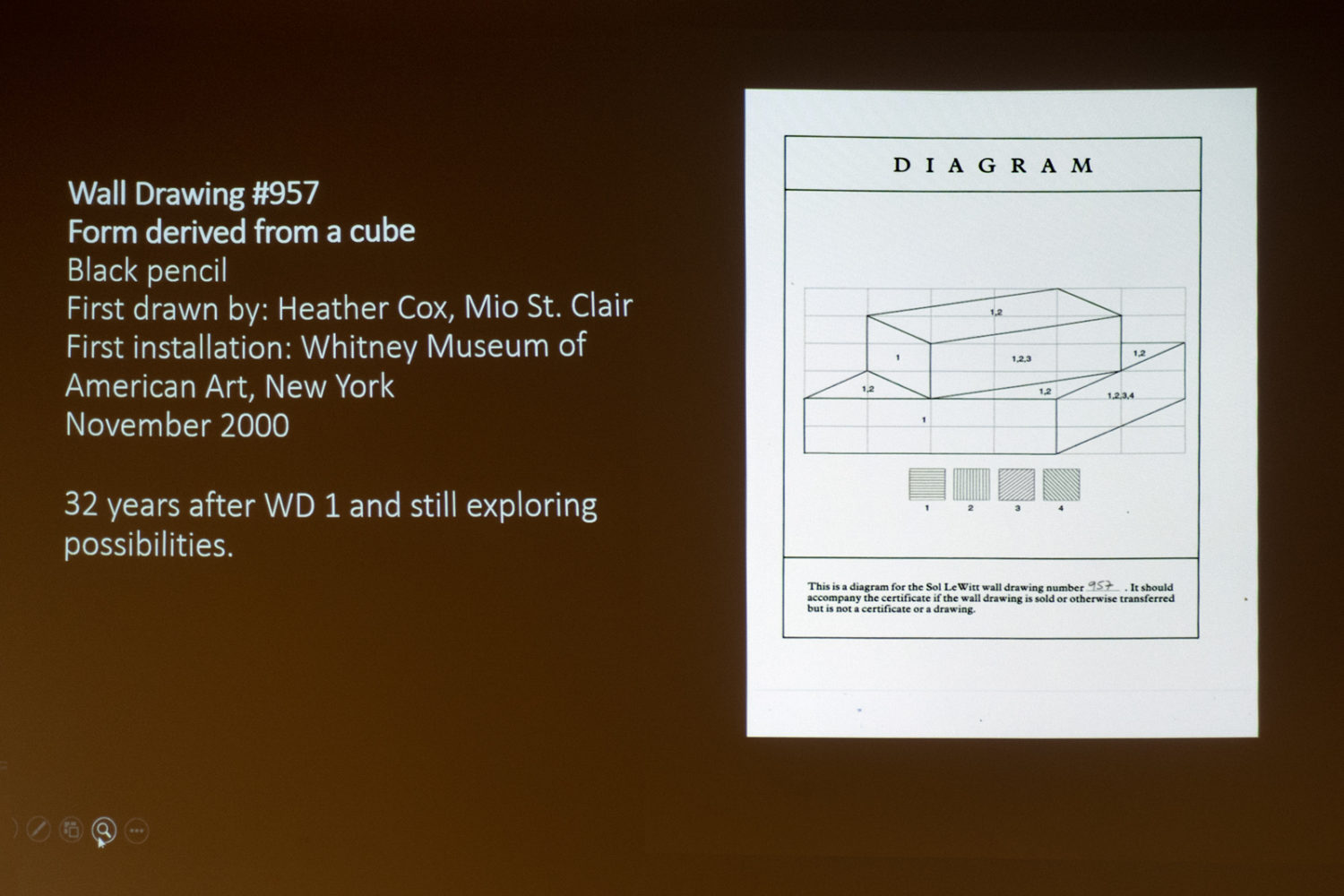
John Hogan, a long time Sol LeWitt business partner and friend, spoke at the Memorial Art Gallery last night in conjunction with the recently installed “Wall Drawing #957, Form derived from a cube.” He explained how LeWitt’s thinking evolved as an artist, how he thought of himself as a composer and how he came to the realization that the idea is the art, not the execution.
His first wall drawing was installed at Paul Cooper’s gallery in New York in 1968 as a benefit for the Students Mobilization Committee to End the War in Viet Nam. He sold the concept without a maquette. The buyer received paperwork like the one shown above (the title to Wall Drawing #957) and then hired craftspeople to produce the drawing on a wall as the MAG did.
We have seen many of LeWitt’s drawings over the years and I am always stuck by the way the isometric rendition of the forms plays with my senses. His forms don’t recede to any diminishing point. I came home with action points. Look up “Sol LeWitt – Sentences on Conceptual Art,” “Download Sol LeWitt app from the App Store.”
In this weekend’s NYT in an article entitled “35 Ways Real People Are Using A.I. Right Now” an entry by the artist Amy Goodchild called, “Draw like Sol LeWitt,” she described feeding Sol LetWitt’s instructions to various chatbots. “On a wall surface, any continuous stretch of wall, using a hard pencil, place 50 points at random. The points should be evenly distributed over the area of the wall. All of the points should be connected by straight lines.” With OpenAI’s older model, GPT-3, it was mostly a flop but GPT-4 did OK. Imagine if LeWitt was alive for this.
Leave a comment